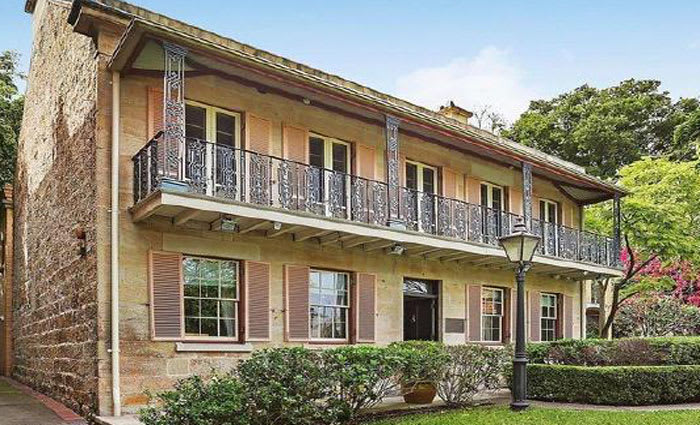Millers Point sales have fetched up to $7.7 million
The NSW State Government has sold 125 properties in Millers Point since its sales program recommenced in 2014, with the program delivering funds for around 1,500 new social housing dwellings around the state.
The sales of the mostly original condition sandstone abodes have yielded more than $300 million for modern social housing investment.
The Millers Point sales program will kick off in 2017 in early February with the launch of six blocks of four apartments.
The biggest sale among the sandstone offerings came at the start of last year when Darling House fetched $7.7 million at auction.
Formerly known as the Rocks Cottage Type Hospital, the standalone house offers 10 bedrooms, 10 ensuite bathrooms and picturesque gardens in a quiet enclave.
It has a sandstone façade, a cantilevered Victorian verandah, a large entertainers deck and a separate office.
McGrath Estate Agency founder John McGrath has repeatedly pinpointed the area around The Rocks as a wise invstment.
"As a shift in the housing stock moves from Government owned to private dwelling there is bound to be a massive upgrade to these beautiful harbourside Georgian and Victorian homes," McGrath said.
"Plus a significant change in local amenity that usually follows such upgrades.
"With the recently opened Barangaroo Point park, a 5 minute walk to the CBD & Barangaroo commercial precinct, this is fast becoming one of the most fashionable addresses in Sydney."
Upon the beginning of the Millers Point sell-off, a 2014 survey of agents by Property Observer suggested the initial strong sales were a result of the the combined circumstances, including:
- The then recent overall Sydney market price improvement;
- The massive media exposure arising from the state government's decision to sell what has been almost an exclusive housing commission enclave;
- The emerging Barangaroo effect;
- The big price difference between the earlier 2009-2011 leasehold offerings and the current freehold offerings given Australia's aversion to leasehold.
